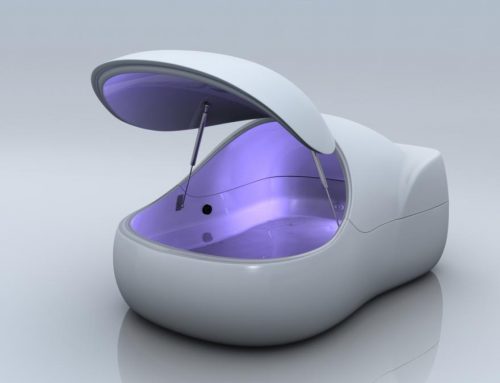Flotation therapy in a float tank is arguably one of the best forms of therapy for many different ailments. Sadly, many people don’t understand exactly what flotation therapy is, how a float tank works and what benefits this type of therapy can provide.
What Is A Float Tank?
A float tank is essentially a large tub that is specially designed to allow you enough room to float in water that is approximately the same temperature as your normal body temperature. Many of these tanks are specially designed to be able to allow for sensory deprivation which many people claim has been able to help them with meditation, re-centering with your mind, and many other health benefits.
While the therapy is a relatively newer one, it has started to become more popular in recent years as a great way to re-center yourself and is now often used in conjunction with other therapy methods for the treatment of certain injuries and other issues.
How Does A Float Tank Work?
In a standard float tank, you lie back on your back and relax your body so that you can just float in the water. This alleviates muscle strain, relieves pressure from joints, and delivers a feeling of overall weightlessness that allows for optimal relaxation.
In a sensory deprivation float tank, this experience is taken to a whole new level as outside noises and other distracting stimulation is removed from the environment and you can completely relax and find yourself alone with your thoughts. Many people claim that this helps them obtain a centering effect and allows them to approach their days feeling renewed and less stressed than they were prior to their floating session.
What Can Float Tanks Be Used For?
Since float tanks are still relatively new, many people do not understand exactly what they can be used for. Float tanks can help to aid in therapy for many different situations.
As mentioned above, the first one that comes to mind is for re-centering and mental health. Many people claim that using a sensory deprivation tank allows them to re-center their mind and also helps to relieve stress and anxiety. This allows for more productive days, and helps people to get more accomplished without having to worry about day to day stressors as often.
This type of therapy isn’t only limited to mental health. Many therapists are now recommending floating for injuries, muscle pain, chronic pain, and much more.
Water has been proven to help with the healing process for muscle stiffness and soreness in float tanks allow you to be in a very relaxed state while allowing water to help heal muscle injuries while also promoting circulation to the affected muscle groups.
Many people suffering from chronic pain from disease processes such as arthritis or multiple sclerosis claim that float tanks help them tremendously when it comes to their day-to-day pain relief. While they may not relieve pain entirely, they certainly can help with pain relief to the point of being able to handle pain with over-the-counter medications rather than relying on narcotic pain relief.
Of course, it goes without saying the people suffering from disease processes that cause chronic long-term pain should certainly consult with their physicians before beginning any type of new therapy or medication regimens.
Final Thoughts
As you can see above, regardless of if you are using a regular float tank or a sensory deprivation tank, the benefits of this type of therapy can be numerous and can also be very long-lasting. While float tanks are not designed to completely alleviate symptoms, when used in conjunction with traditional therapy forms, many people claim that the results are impressive.
If you suffer from recent traumatic injuries, chronic pain, or you just need a way to relax and unwind from the daily stressors of life, then you should certainly take the time to consider trying out a float tank before you begin more severe therapy options that may have far more potential complications.







Leave A Comment